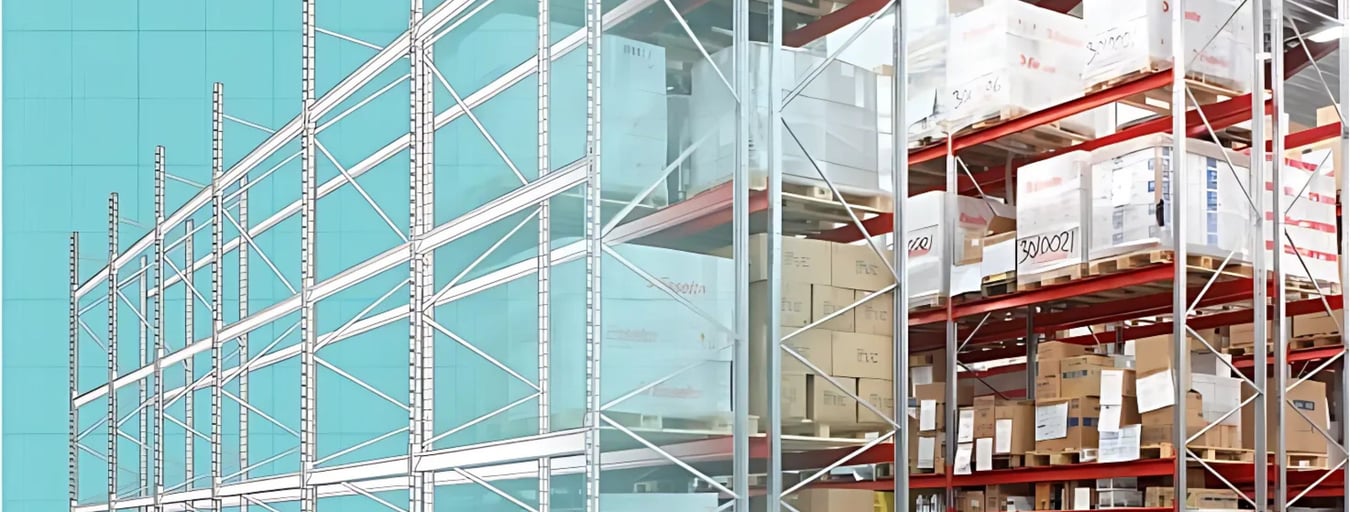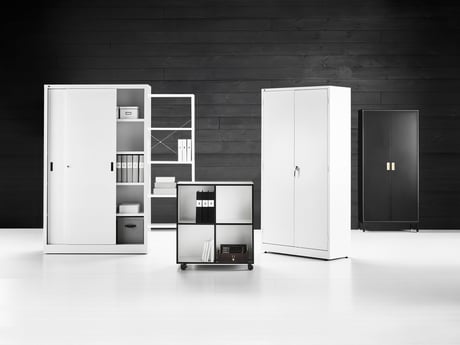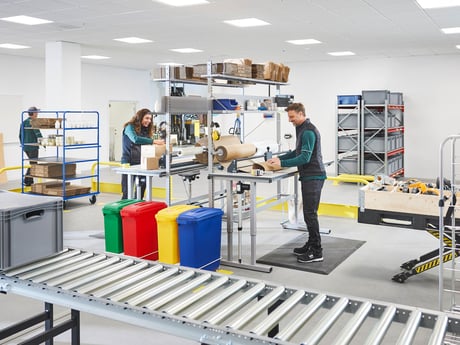- AJ Products UK
- Blog: Tips to Inspire Happiness at Work
- Tips & trends
- Tips for Improving Rack and Shelving Safety

Tips for Improving Rack and Shelving Safety
To ensure your warehouse remains a safe, productive environment, here are some practical and proven tips to improve racking and shelving safety.
Invest in the right rack shelving system
Not all shelving systems are created equal. Choosing the wrong type of racking can result in structural issues, inefficient storage, or even collapse under weight. These accidents may not only damage the goods but, more importantly, can also injure employees. Shelving collapse is rare but when it occurs it can have disastrous consequences.
Before investing, assess your inventory type, picking methods, available floor space, and the weight of stored goods. There are a variety of shelves available on the market. Racks are designed for specific functions and to hold particular kinds of inventory. For instance, a carton flow rack is meant to be used for light cartons and presents pickers with slightly angled, horizontal columns of boxes that automatically move goods to the front of the shelf for picking. Always consult with a racking specialist to ensure you choose a system tailored to your operational needs.
Provide proper training
Employees working with shelving racks should be properly trained. Racks are designed to hold specific loads. In a functioning warehouse, the inventory is not simply loaded onto the racks and then left to sit. Employees will be moving in and out of the racks with their forklifts, removing, moving and restacking loads. This creates the potential for accidents. A load may be incorrectly placed, a rack may get overloaded, the forklift might bump into the rack, etc. This is why it is important for employees to be trained not just in how to load and unload racking, but also in understanding load limits, safe stacking techniques, and how to navigate racking systems using forklifts or manual handling equipment.
Untrained employees may inadvertently overload racks, place goods unevenly, or strike racking structures with machinery, all of which can weaken the system over time and increase the risk of collapse.
Understand the limits: Load capacities matter
If you adjust beam heights or modify the racking configuration in any way, it's essential to reassess the load capacity, as changes can affect the overall strength and balance of the system.
Separate manual and forlift operations
Use passive safety features
- Fit impact guards at the base of racks to protect against forklift collisions
- Use mesh panels or safety netting to prevent items falling from upper shelves
- Install end-of-aisle protection to shield vulnerable corners
- Consider anti-collapse mesh at the back of racks, especially in high-traffic zones
Carry out regular racking inspections
Routine inspection is key to preventing minor damage from turning into major failure. Establish a regular racking inspection schedule,at least annually by a qualified expert, and more frequently with in-house visual checks. Look for signs of rust, dented uprights, loose bolts, damaged beams, or any misaligned components.
Under UK health and safety legislation (HSE), employers are legally required to maintain all work equipment in a safe condition. That includes racking systems.
Report and repair damage immediately
One of the most common causes of racking accidents is ignoring small damages. If you spot even minor damage, it should be reported and addressed immediately. Leaving damage unchecked can lead to system instability and increase the risk of collapse.
Create a clear reporting process for your team to follow when damage is discovered and act swiftly to make repairs using qualified personnel.
Adapting the storage to your needs
Modern racking and shelving systems often offer modular or adjustable components, which allow you to change beam heights or add additional sections as your business grows. However, any such modifications should be reviewed by a qualified racking expert. Changing the structure can unintentionally reduce load capacities or create uneven pressure points, increasing the risk of failure.
Need help choosing the right racking?
We’re here to help you find a safe, efficient solution for your warehouse. If you're unsure which racking system suits your storage needs or want expert advice on setting up a safer warehouse layout, just get in touch, our team is happy to assist.
Let AJ Products be your trusted partner for racking, shelving, and everything you need to create a safer, more productive workplace.



